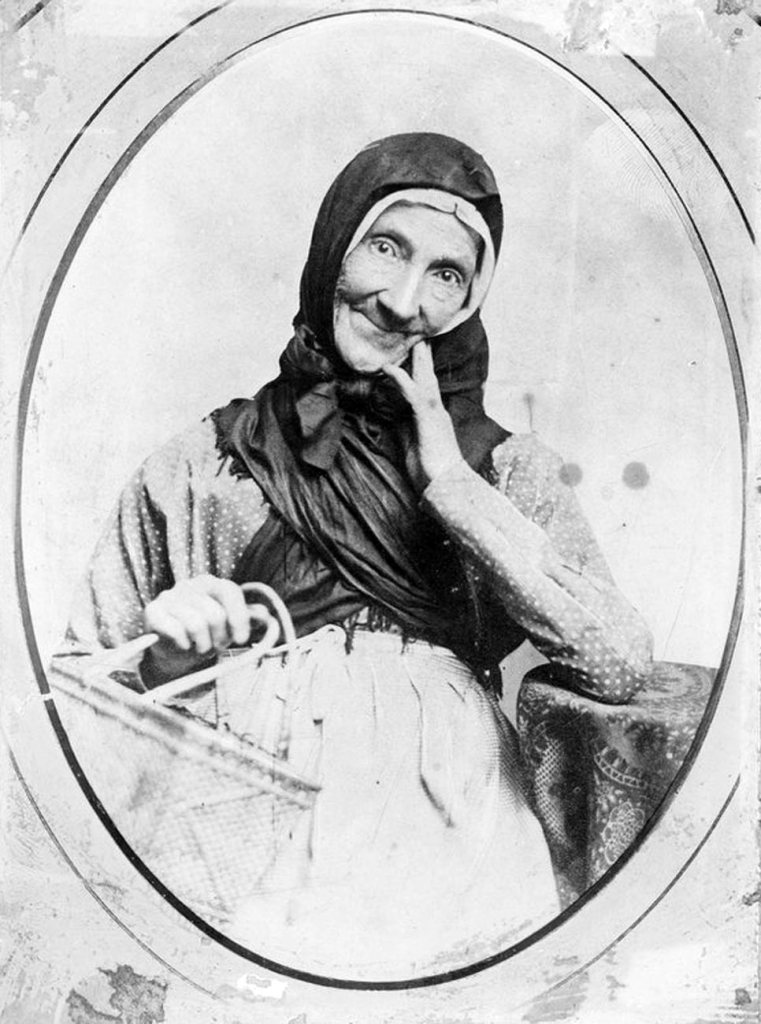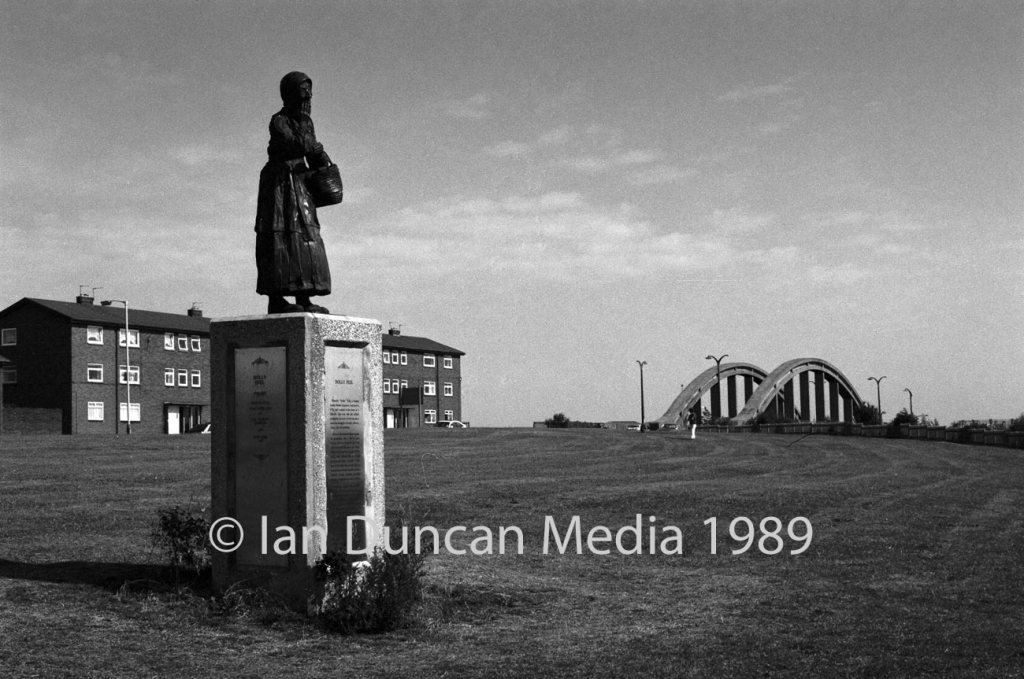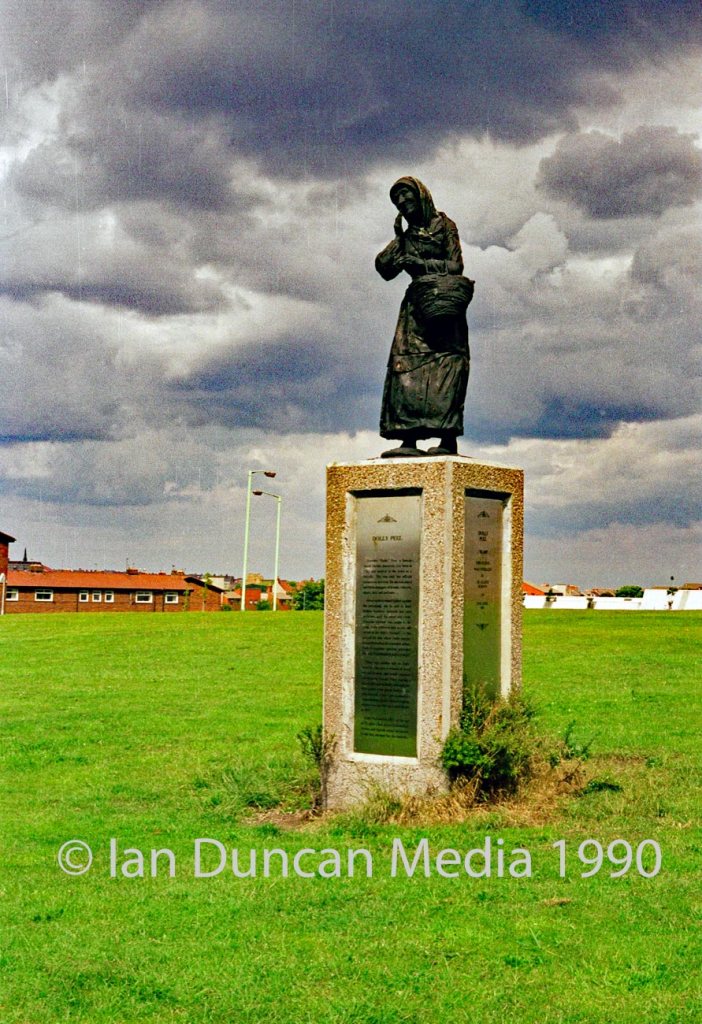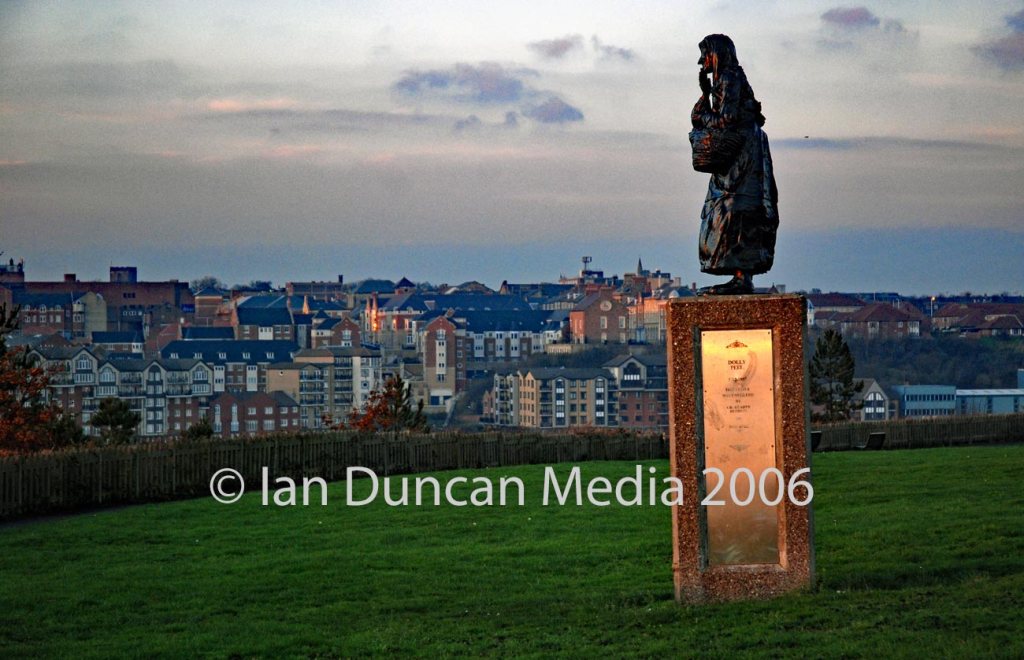
Every town has its local characters and in South Shields we had Dolly Peel from the late 18th and 19th centuries.
She is remembered in the town these days by a pub bearing her name in Commercial Road, in oil paintings, a play and video, and there is even a statue overlooking the River Tyne, but her back story is way more interesting.
The statue, which was unveiled in River Drive in 1987, was originally commissioned by her great great grandson Reg Peel and it was sculpted by artist Bill Gofton. It was based on the surviving photograph of Dolly (see above) and it is located in River Drive where she is depicted looking out over the River Tyne. As you can see the statue has been the subject of my lens over the years (see below).
She has been described as “a woman ahead of her time” and she was definitely a famous and colourful character who was born Dorothy Appleby in 1782.
Dolly later lived in Shadwell Street, in the Riverside area of the town, with her husband Cuthbert who she married in 1803.
While her official occupation was listed as fishwife she was also a notorious smuggler of dutiable goods such as brandy, tobacco, lace and perfume – in fact “anything that was dutiable” at the time – and she was active up and down the north east coast between Cullercoats and the Marsden Grotto and beyond. She was even dubbed “the Queen of the smugglers”.
However, she is better remembered for her determined opposition to the dreaded Press Gangs which operated in the British coastal ports to feed an increased demand by the Royal Navy during the Napoleonic wars.
According to local legend she is said to have evaded their attempts to capture local sailors on a number of occasions by hiding men and boys under her “voluminous petticoats” including her husband.
On one occasion he was being pursued by the Press Gang and they managed to reach the family home but they were kept back single-handedly by Dolly while he managed to evade capture by escaping through a window and onto the roof.
But, when he was eventually captured, Dolly followed him to sea by smuggling herself aboard and served in the Cockpit where crude surgery was carried out on sailors who were wounded. She also served as a powder monkey, fuelling the guns in the heat of battle, and it was said that she had nerves of steel.
But there was also a different side to this brave and indefatigable woman as she was also a great storyteller and amateur poet. Apparently George B Hodgson, who was the editor of the Shields Gazette, said: “Had she been an educated woman she might have made a reputations a poetess. As it was she was famous for her ability to rhyme extempore on any subject.”
Apparently she composed an address congratulating Robert Ingham who was returned as the first MP for South Shields and a song of the loss the Sunderland barque Dove in 1836, which was laden with Russian tallow, on the Herd Sand.
Sadly she died from bronchitis at her home on October 14, 1857. I think it say a lot about the character of South Shields that we actually have a statue commemorating the life of Dolly Peel in the town.




